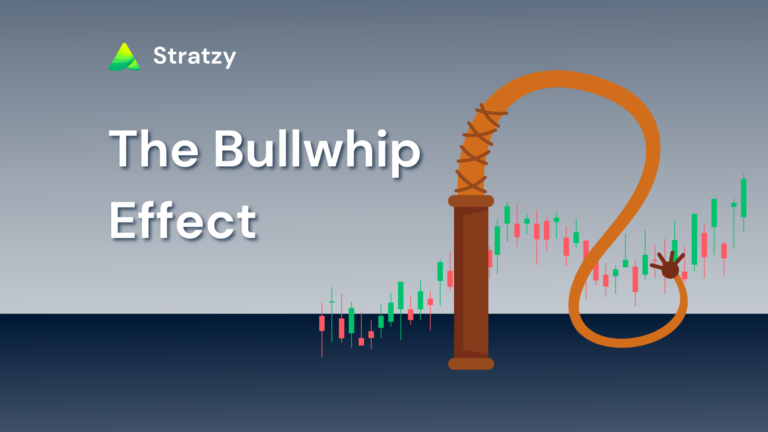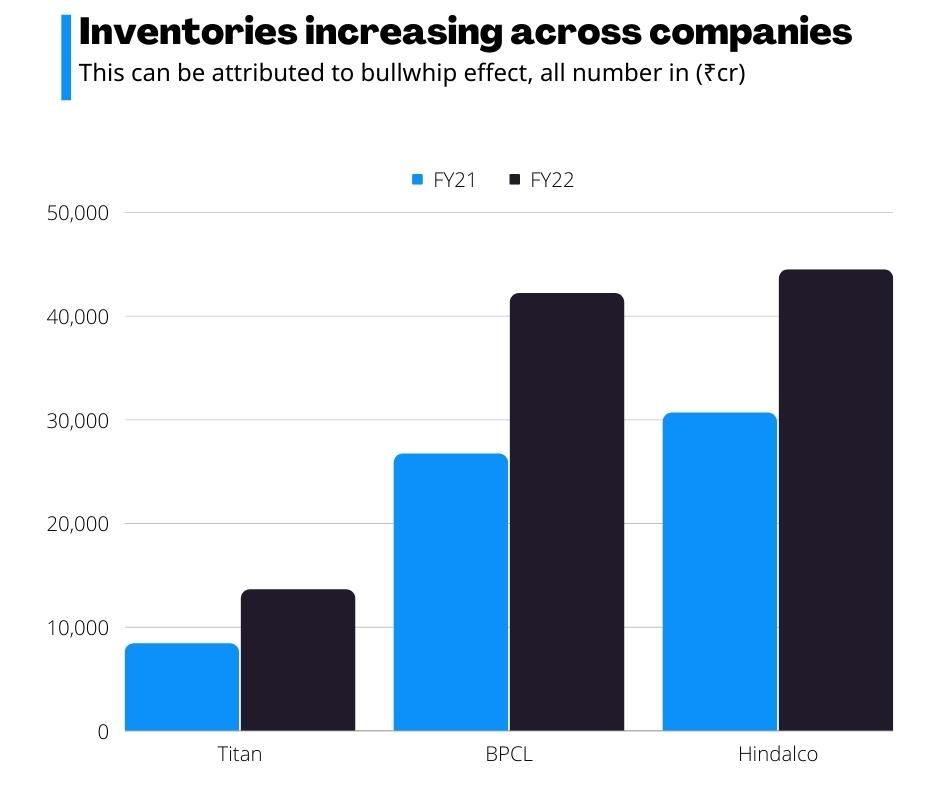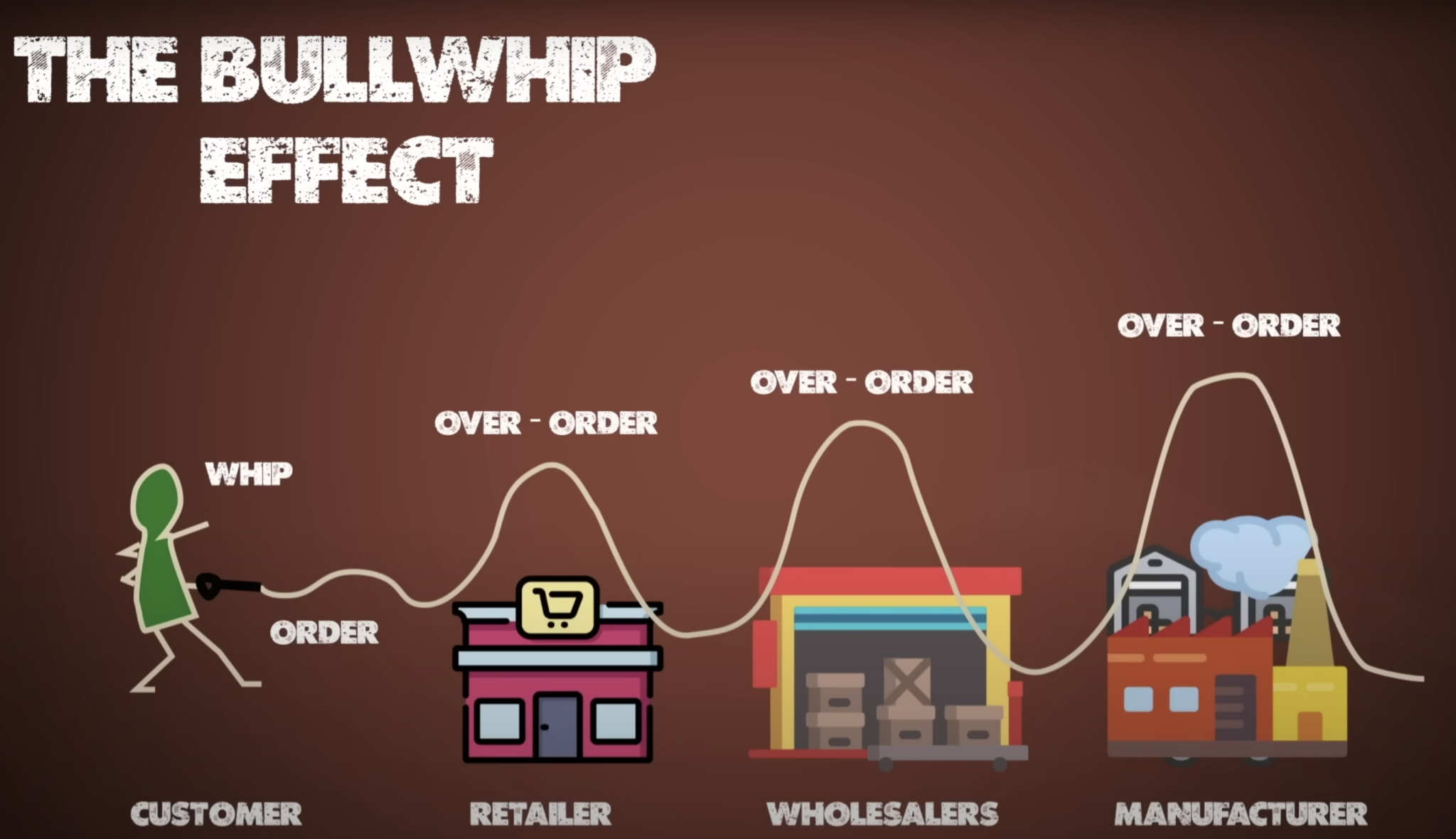THE BULLWHIP EFFECT, UNDERSTANDING THE IMPORTANT ECONOMIC CONCEPT

Recently inventories have been increasing across sectors and companies, These huge (in some cases) almost 100% growth in inventories is actually caused by small changes in demand!
This increase in inventories is a cyclical phenomenon which happens in cycles and brings various challenges with it. So why does this happen? Many experts including Michael Burry (the guy who shorted housing market in 2008) thinks the answer is “The Bullwhip Effect”
The bullwhip effect is a topic that is concerned with the area of supply chain management. It was introduced in 1977 and has an important implication in today’s economic scenario.

What is a supply chain?
We all know there were times when the latest iPhone just dropped and you wanted to get your hands on one of them, but unfortunately, you missed the pre-booking deadline. So to get an iPhone you go to your nearest store and ask for it but the store representative tells you that the product is out of stock due to supply chain inefficiency which has been caused by a global chip shortage.
The thing is iPhone might be sold in online and offline stores but they are mostly manufactured in Shenzhen, China. Before it can be manufactured at an assembly site, raw material suppliers from all around the world need to deliver the goods required to make an iPhone to such an assembly site. After assembly, the phone needs to be shipped to a storage warehouse and after that gets delivered to your doorstep or an offline store. These entities and their communication is collectively considered as a supply chain

The start
Now that we understand that retailer, wholesalers and manufacturers are the 3 important parts of supply chain. Where does the bullwhip effect start?
During the recent years when liquidity was being pumped and people started earning more we saw huge demand for items and products in retail stores. For example, your local retail store starting seeing more demand for cereal boxes. They were ordering 200 boxes but the demand was for more than 300! So now the next time they place an order they’ll place orders for 400 boxes keeping the rise in demand in mind. This effect now lands to wholesalers who after seeing the rise in demand across retail stores increase their order of 1000 boxes a day to 2000 boxes a day and this increase in orders from wholesalers makes manufactures manufacture more to keep in lines with the increasing demand.

In this situation according to the law of supply and demand when supply is high and the demand is low prices are bound to drop. It does not seem to be the case as of now due to increased inflation but inflation makes this situation worse by hurting the customer sentiment further. So this increased inventory which has been accumulated can lead to supply gut if inflation is not controlled properly.
A supply glut is when stores and sellers drop prices to increase sales. Contrary to what people think this is not a good thing, since low prices mean low profits for corporations which means layoffs and salary cuts. This entire effect is called the bullwhip effect.
Due to the recent pandemic and ongoing war in Ukraine supply chains have been under pressure but they are starting to catch up fast. Overall globally wholesale inventories are up 24% YOY. But consumer sentiment is low and hence the demand for goods is low.
The worst case scenario is big supply gut with corporations unable to sell the inventory and prices are dropped leading to disinflation, which is a drastic slowdown in inflation rate creating an environment for central banks to take some tough decisions which reduces economic activity and making doing business becomes hard.
This concept is worth understanding for your investing endeavors, so if you find it difficult to grasp read it once again or drop questions in the comments.
Happy Investing!
